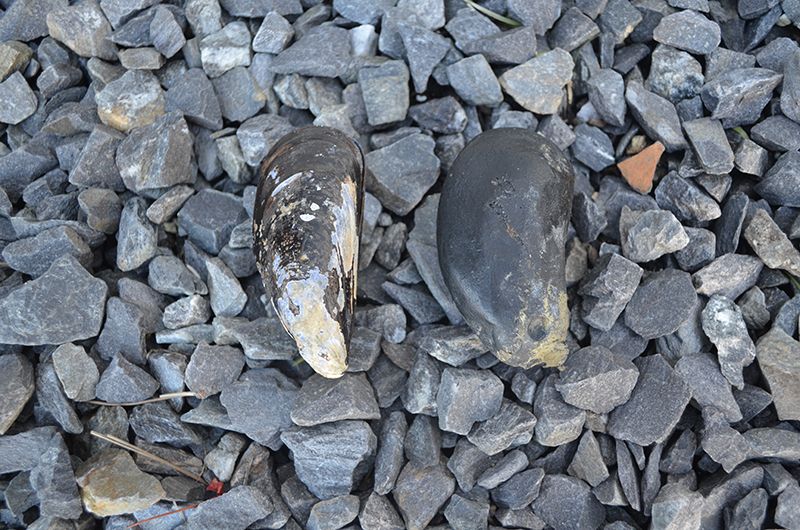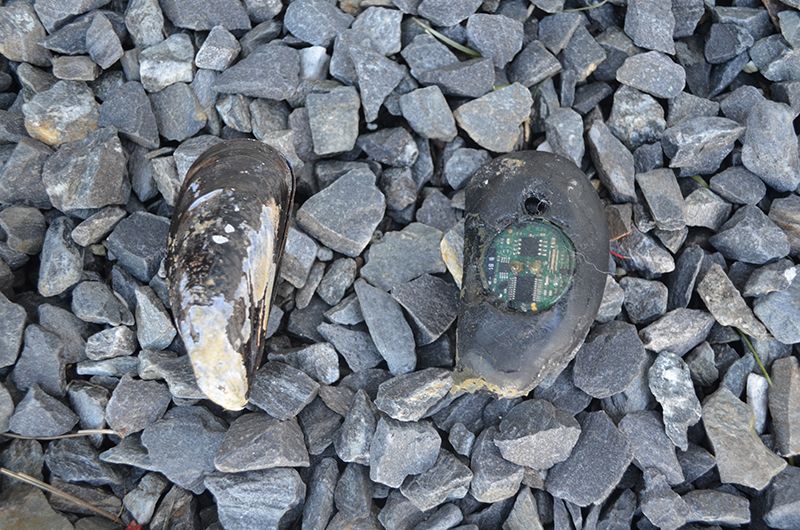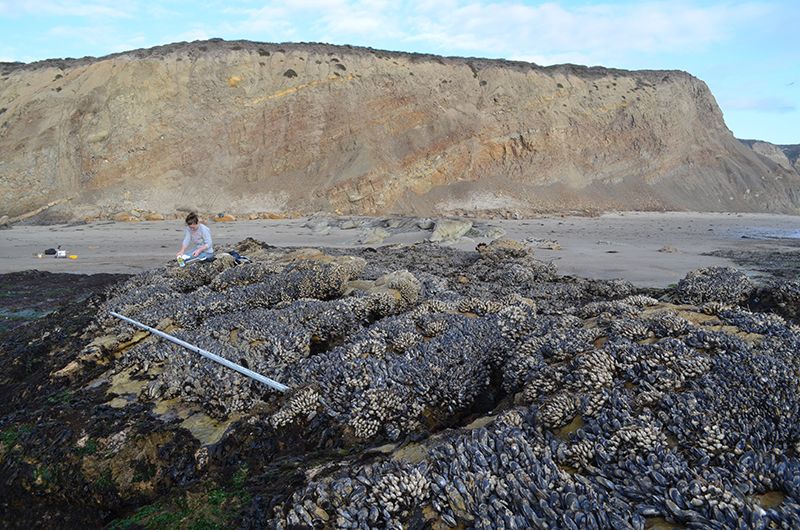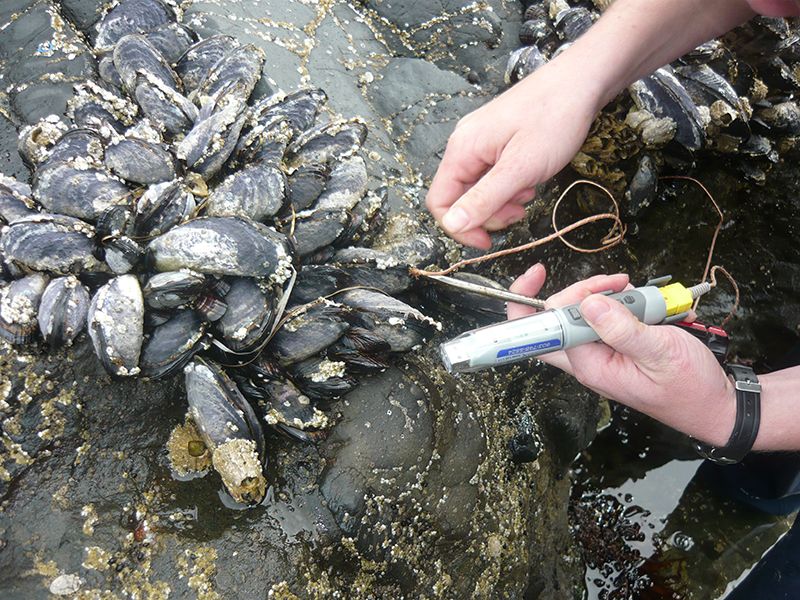Robot Shellfish May Tell Us About Climate Change’s Impact on Marine Species
Climate scientists at Northeastern University have developed “robomussels” with sensors to track temperatures in mussel beds
/https://tf-cmsv2-smithsonianmag-media.s3.amazonaws.com/filer/00/33/00338ff8-306a-465e-936e-8fb39e01f4c5/robomussel_oregon_brian_helmuth.jpg)
Out in a bed of mussels, off the Monterey coast in California in a space exposed at low tide, a handful of green LEDs blink, indicating the location of a cohort of robomussels.
The little black data loggers, formed from polyester resin, have been precisely engineered by Brian Helmuth and his lab at Northeastern University to mimic the mussels already living there, a few of which researchers plucked out to make space for the fake ones. They’re here for a study of climate change, and, more precisely, its effect on one of the most important species found in the ocean.
Helmuth, a climate scientist, has been the driving force behind more than 70 of these plots, scattered across the globe, over the last 18 years. They’ve been logging information, in 10-minute intervals, on the temperature not of the air or water, but of the actual bodies of the Mytilus californianus mussels that live there. This gives a much more accurate picture of how climate change is affecting the species than the temperature of its surroundings could.
The mussels, which biologists call an “engineering species,” drive biodiversity and create habitat for other animals, says Helmuth, and so the scope of his research extends beyond the state of the intertidal ecosystems where the mussels live and to the way we understand the impacts of climate change on species, and how, and where, mussel farmers put their farms.
It’s not a measure of climate change, exactly—to do that, you’d be better off picking a location that’s consistent over the long term—but a measure of how climate change is affecting a particular species, and the ecosystem that species is a part of.
There are a couple of ways temperature can kill a mussel. Heat stress, in general, makes one less fit to continue its other normal functions. It’s costly, from an energy perspective, to live in a warm environment, and that’s less energy the mussels have to eat or reproduce. In more extreme circumstances, too much heat can destroy the proteins in the mussel’s body, similar to what happens when you cook one.
“From a biological viewpoint, an animal doesn’t care at all about climate,” says Helmuth. “It could care less what the 30-year average is, it cares how that climate [affects] the local weather.”
Helmuth uses small loggers called Tidbits, which record the temps over six to eight months, after which they must be replaced and their data uploaded. But he couldn’t just put a temperature sensor in the sun. If I’m standing in the sun wearing a black T-shirt, you’ll get a much better idea how I feel if you put on a black T-shirt, too. But to dial it in precisely, he had to account for many other factors. The size is important; a larger mussel will heat up more slowly, but stay warm longer. Helmuth experimented with different densities of resin, which he used to make the bodies and interiors of the mussels, until he found one that had properties similar to the living mussels.
“Getting the shape and the color right isn’t too difficult, you can just kind of build a mold,” says Helmuth. “But we had to do a lot of tests in a wind tunnel to make sure that [we matched] what we call the thermal inertia, the tendency to either heat up or slow the rate of heating, depending on what the materials are.”
Temperature is only one part of the equation anyway. A mussel’s health depends on food availability, pH, and more, all in combination. Helmuth’s latest research has begun to identify hyperlocal niches of mussel resilience and vulnerability, and the bulk of it has shown a surprising trend: Latitude often has little to do with the temperature of individual mussel beds, let alone their overall health. All the factors combined lead to what Helmuth calls a mosaic, a patchwork of sites that are at varying degrees of risk for collapse. He’s now working to predict the future health of mussel beds, not just to save the mussels but to identify sites that would be good for growing them commercially.
“To me, the coolest aspect of this approach is, if you take a non-human view of the world and of environmental change, you see totally different patterns than you would from a human perspective,” says Helmuth. “Unless you take this non-human centered view, there’s an awful lot going on out there with environmental change that we’re going to completely miss.”



